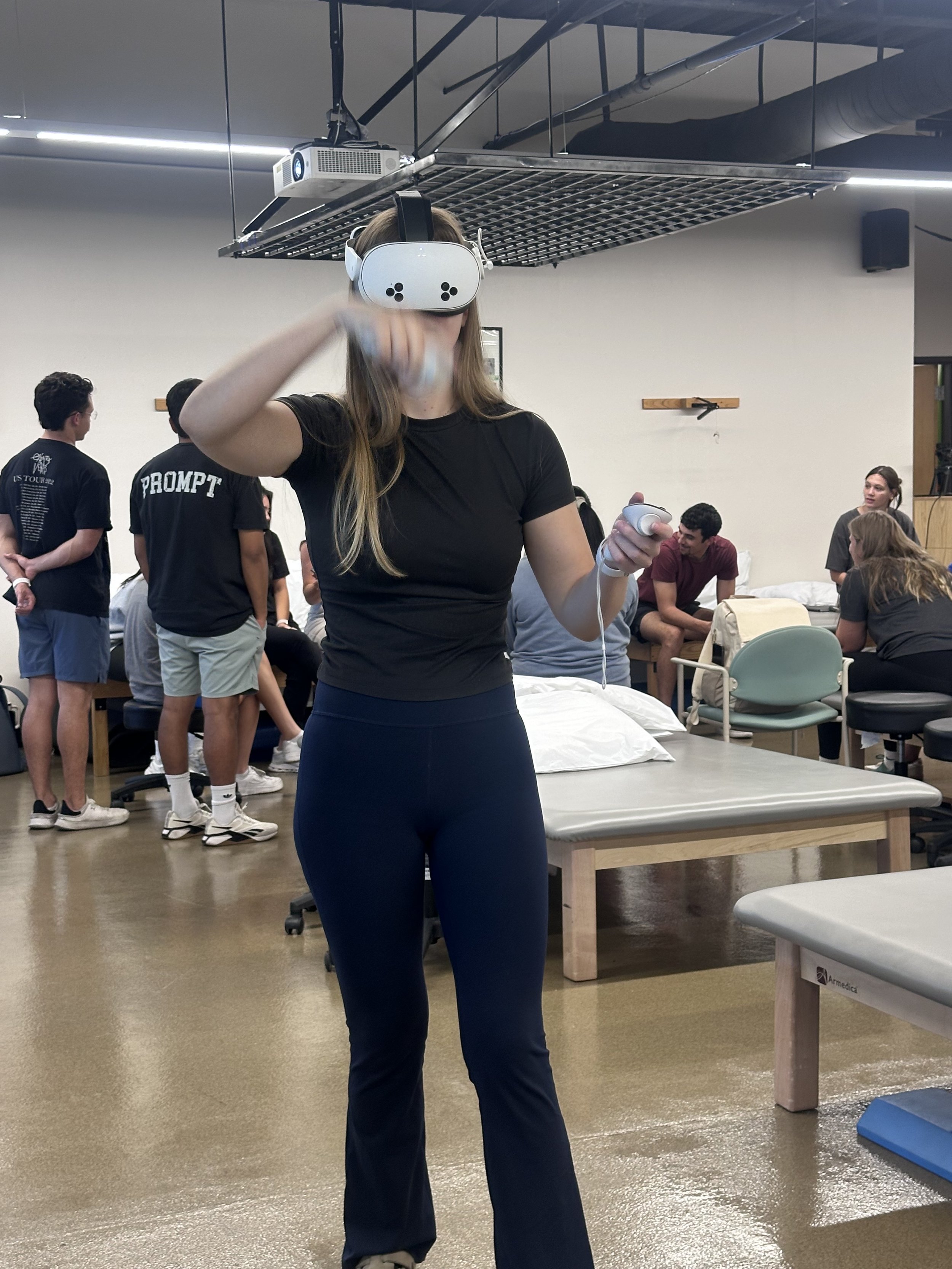Exploring the Future of XR in Rehab: Thank You, A.T. Still University
This past week, I had the incredible opportunity to speak at A.T. Still University and engage with a passionate group of future clinicians about a subject close to my heart: the role of extended reality (XR) in rehabilitation. I want to extend my deepest thanks to the students and faculty who welcomed me so warmly. It was not only an honor to teach but also a joy to witness the curiosity, insight, and enthusiasm that filled the room.
Knowledge is Power in Patient Care
As clinicians, we’re in a constant pursuit of knowledge that helps us improve outcomes for our patients. I believe that XR is one of the most exciting and powerful tools we can add to our therapeutic toolkit. During the lecture, we explored how neuroplasticity—the brain’s ability to reorganize and adapt—is not just a concept for neurologic rehabilitation, but a foundational principle that supports recovery across a wide range of diagnoses.
Whether we’re treating orthopedic conditions, vestibular impairments, chronic pain, or cognitive decline, we are ultimately working to change behavior, rebuild function, and stimulate meaningful adaptations. XR provides a platform to do just that—with immersive, high-repetition, and goal-directed practice that’s engaging for the patient and effective for the brain and body.
XR Supports a Wide Spectrum of Recovery
One of the most exciting parts of our discussion was emphasizing how broad the applications of XR truly are. XR is not just for neurologic diagnoses like stroke or TBI—it has meaningful impact in:
Orthopedic rehab for post-surgical recovery or balance training,
Pain management including acute, chronic, and phantom limb pain,
Vestibular therapy and fall prevention,
Cognitive rehabilitation for older adults or patients with neurodegenerative conditions,
And yes, traditional neuro rehab for stroke, SCI, MS, and Parkinson’s disease.
This versatility makes XR an invaluable asset in modern rehab. As clinicians, it gives us the ability to personalize care and keep patients actively engaged—something we know is key for driving outcomes.
Research Examples From the Lecture
In our guest lecture, we reviewed several studies that help reinforce why XR deserves serious attention in clinical care. A few examples include:
Maier et al. (2019), who found that rehab-specific VR applications led to significantly better motor outcomes for stroke patients compared to recreational VR tools.
Pourmand et al. (2018), whose review supported immersive VR’s effectiveness for managing both acute and chronic pain by providing meaningful distraction and reducing pain perception.
Campo-Prieto et al. (2022), who demonstrated that immersive VR training improved balance in nonagenarian women, showing that this technology is not just for younger or high-tech populations.
These are just a few of the many studies we touched on in our time together. The key takeaway is this: XR is more than a novel idea. It’s a clinically validated approach that can meaningfully support recovery across the spectrum of physical, cognitive, and sensory domains.
Building Confidence in Emerging Tools
One of my biggest goals when speaking with students is to help build confidence in using emerging technologies. The more we understand the tools available to us, the more empowered we are to make thoughtful, evidence-informed decisions in our treatment planning.
I truly believe that XR will continue to grow—not as a replacement for our skills, but as an extension of them. By combining our clinical judgment with immersive tools that support neuroplastic change, we can accelerate progress and make therapy more engaging and effective for our patients.
Looking Ahead with Optimism
I left A.T. Still University feeling energized. The questions students asked and the ideas they shared reaffirmed my belief that the future of rehabilitation is in good hands. I’m excited for what’s ahead—for the students who will soon be leading this field, and for the patients whose lives will be changed by it.
To all the future PTs, OTs, and healthcare leaders I met—thank you. Keep asking questions, keep pushing boundaries, and keep your minds open. Together, we are shaping a better future for rehabilitation.
References
Campo-Prieto, P., Cancela-Carral, J. M., Alsina-Rey, B., & Rodríguez-Fuentes, G. (2022). Immersive virtual reality as a novel physical therapy approach for nonagenarians: Usability and effects on balance outcomes of a game-based exercise program. Journal of Clinical Medicine, 11(13), 3911. https://doi.org/10.3390/jcm11133911
Maier, M., Rubio Ballester, B., Duff, A., Duarte Oller, E., & Verschure, P. F. M. J. (2019). Effect of specific over nonspecific VR-based rehabilitation on poststroke motor recovery: A systematic meta-analysis. Neurorehabilitation and Neural Repair, 33(2), 112–129. https://doi.org/10.1177/1545968318820169
Pourmand, A., Davis, S., Marchak, A., Whiteside, T., Sikka, N., & Hall, M. (2018). Virtual reality as a clinical tool for pain management. Current Pain and Headache Reports, 22(8), 53. https://doi.org/10.1007/s11916-018-0708-2

